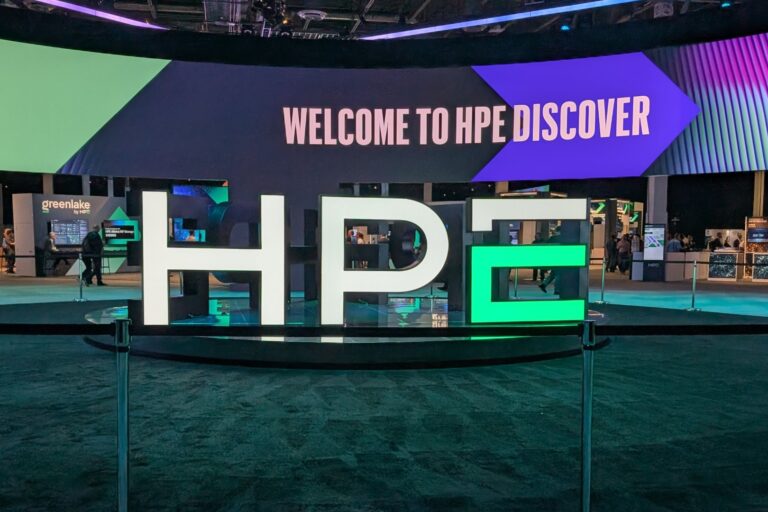HPE has a new logo, but does it also have a new story to tell? At HPE Discover 2025, we sat down with long-term IT industry analist Zeus Kerravala of ZK Research to dive deep into HPE’s current position in the enterprise tech landscape, and how AI is reshaping its portfolio and strategy. Check out the conversation by watching the video below.
Kerravala emphasizes that HPE is in its strongest position in years. While the company may have missed the cloud wave in the past, it’s determined not to repeat that with AI.
HPE’s approach to the AI Factory concept, complete with Nvidia partnerships, smart switching, and integrated AI infrastructure, is its bet on the future. HPE isn’t just slapping Nvidia hardware into racks like everyone else. Its differentiation comes from software: OpsRamp delivers observability and manageability across heterogeneous environments. That’s key for enterprises with mixed stacks, not just HPE hardware. The integration of automation through tools like Morpheus also helps reduce staffing demands in increasingly complex IT environments.
HPE’s strategy: focus on the entire stack
One standout area is networking. The rise of “smart switches” with embedded DPUs (from Nvidia or Pensando) is finally becoming viable. These switches offload security functions like encryption and traffic inspection, critical for AI environments where lateral data movement is a prime target. Kerravala predicts internal firewalls will fade away, replaced by embedded, real-time security at the switch level.
Storage and compute also get an upgrade. HPE’s Alletra storage integrates directly with MCP servers to streamline data pipelines for AI workloads. But the bigger picture is about tight integration across compute, storage, and networking. These are essential for performant, secure AI systems.
Virtualization is another frontier. With Broadcom locking customers into full VMware Cloud Foundation stacks, many are exploring alternatives. HPE’s VME platform offers flexibility: buy it standalone or integrate it into GreenLake. That “land and expand” approach, without aggressive lock-in, may prove to be a powerful differentiator.
HPE isn’t there yet
HPE may have the components enterprises need to build their modern stacks, this doesn’t mean the company does everything right. Kerravala indicates that HPE needs to step up as a thought leader. AI shouldn’t just accelerate existing processes, it should challenge the fundamentals of how businesses operate. HPE, with its broad customer base and infrastructure pedigree, is well-positioned to shape that vision. But it needs to articulate it clearly.
GreenLake is central to HPE’s future. It hasn’t seen explosive growth yet, but as AI adoption scales and automation matures, the platform could become the backbone of AI-driven infrastructure.
The bottom line is that HPE is playing the long game, leaning into openness, integration, and customer-centric design. If AI really is the next compute revolution, HPE wants to be at its core.
Here are the other videos we shot at HPE Discover 2025:
- What is HPE’s Unleash AI program and how does it help companies?
- The unique IT challenges of Carnival Cruise Line’s “floating cities”
Also read: HPE infuses stack with GreenLake Intelligence’s agentic AI
Techzine TV
We hope you are already very familiar with our Techzine Global website. We write about the latest news, and also publish many thorough and comprehensive stories that go in-depth about anything IT. However, video is also an important medium to get our message across. That is why we started Techzine TV. You can expect various types of videos on this new platform, which will be integrated into Techzine Global so you always have easy access to the latest videos we produce and publish. These videos can be shot at our offices, on the road or at an event.
We hope you like this new form of content. It is not perfect yet (can it ever be?), and we will keep polishing and improving. However, the quality of the conversations is leading. Having said that, we are always open to constructive feedback, so please reach out if you have some of that. Both Coen van Eenbergen and Sander Almekinders are easy to find on LinkedIn.
